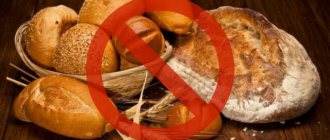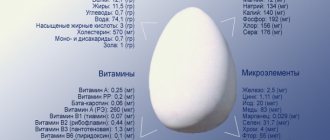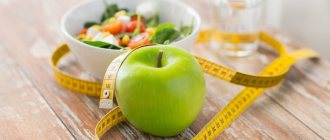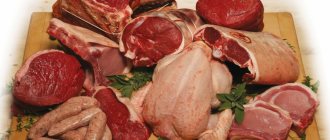Allergy is a specific reaction of the body to allergens and one of the best methods to eliminate it is a hypoallergenic diet.
It is prescribed in addition to generally accepted therapeutic actions to improve the general condition of the patient. A hypoallergenic diet is an effective reduction in the allergic load on the body. Its essence lies in the complete exclusion of highly allergenic foods. Also, the selection of this diet can be used during lactation to improve the quality of breast milk.
What is a hypoallergenic diet?
A hypoallergenic diet implies the exclusion of all foods with high allergic properties from the diet. The diet is selected individually, since the causes of the disease are very different.
The hypoallergenic diet includes foods that are gentle on the digestive system. Such nutrition normalizes physiological cycles in the body, while covering the need for proteins, fats, carbohydrates and other microcomponents and vitamins.
Important! Almost every hypoallergenic diet involves reducing the amount of salt. With this diet, you can consume no more than 7 g per day.
A hypoallergenic diet per day should include:
- 400 g carbohydrates;
- 90 g proteins;
- 80 g fat.
Important! Part of the diet must consist of animal products.
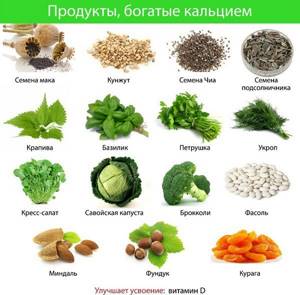
Diet for nursing mothers
The portion of a nursing mother should be filled with vitamin complexes and minerals. Therefore, you need to eat as much as possible of fresh fruits and vegetables (green or yellow in color) allowed by the hypoallergenic diet; this is a prerequisite for the nutrition of a nursing mother.
Attention! It is necessary to completely eliminate overeating, since the remaining food will not be digested by the body, but will begin to deform into toxins, which will poison the body from the inside.
Products containing large amounts of protein should be combined with vegetables, this will help prevent allergenic particles from entering the blood plasma. This anti-allergic technique will be useful not only for nursing mothers, but also for children.
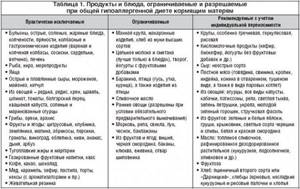
Why is this diet needed?
The primary goal of a hypoallergenic diet is to reduce the number of allergens entering the body. Products with sensitization can aggravate a person’s condition. Also, an important task of the diet is to determine the type of allergens and further reduce their number.
When using this diet, it is possible to minimize allergy symptoms, except in cases of particularly severe patient conditions, such as anaphylactic shock. Thanks to these properties of the diet, the need to take medications is reduced.
Nutrition during the diet is rational and balanced. This is important for all spheres of the body’s life, with diet having the greatest importance for the gastrointestinal tract. It helps to tone the body, saturate it with useful substances and speed up the process of removing toxins.
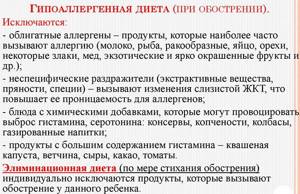
Key Nutrition Principles
A hypoallergenic diet is an effective therapeutic measure. A nutritionist will help you select individual nutrition based on anti-allergenic products and create a special menu.
Basic principles of the diet:
- Proper eating regimen. Fractional nutrition is recommended; it is based on dividing food into 5-6 meals. This diet prevents overeating, reduces the load on the gastrointestinal tract, and increases the quality of food breakdown in the intestines. Allergy sufferers often lose their appetite, and split meals can eliminate this problem.
- Product processing. The best way to prepare low-allergenic dishes is steaming or boiling. You should forget about frying, baking and other types of cooking. It is important to regularly change the water when preparing broths with meat and fish to reduce the amount of allergens released. It is recommended to change the water three times per preparation.
- Drinking regimen. A hypoallergenic diet always involves drinking plenty and frequently. 1-2 hours after eating, you should drink a lot of water. In general, you need to consume 2.5-3 liters per day - this speeds up the process of removing allergens and toxic compounds from the body.
- Alcoholic drinks. A hypoallergenic diet does not allow for the consumption of alcoholic beverages. Alcohol reduces the speed of digestion and reduces the absorption of nutrients, and accordingly allergic manifestations worsen.
- Temperature. Hypoallergenic products are recommended to be consumed warm; their temperature should be at least 25°C. When eating cold or excessively hot food, irritation of the gastrointestinal tract occurs, and, accordingly, the risk of unwanted reactions of the body increases.
Article on the topic: Antiallergic diet Ado for children and adults
A hypoallergenic diet is indicated for adults for 14-21 days. For children, the duration of the diet can be reduced to 7-10 days.
Important! New foods are introduced into the diet one by one (a new component every 2-3 days) to determine the body’s reaction.
Allergic foods should be recorded in your personal diary. The doctor, after looking at the records, will be able to identify intolerance to one or another component. It is also worth noting that for allergy sufferers, the method of consuming fresh or steamed vegetables and fruits is the best way to obtain vitamins and fiber.
Hypoallergenic products are an essential part of the diet. When preparing dishes from a variety of ingredients, the process of identifying the allergen becomes more complicated. With prolonged monotonous consumption of dishes, the accumulation of certain substances occurs; if one of them is an allergen, there is a high probability of developing severe allergic reactions.
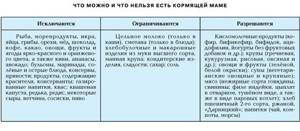
General recommendations
A doctor prescribes a hypoallergenic diet for a child, taking into account his age, physical condition, degree of symptoms and other factors. Only an allergist can change your diet and expand the list of hypoallergenic products after an examination.
When following a diet, it is important to correctly plan your child’s diet. He must receive all vitamins, minerals, sufficient amounts of protein, fats and carbohydrates. This will ensure harmonious physical and mental development and help avoid health problems. An allergist, immunologist or pediatric nutritionist can create a balanced menu.
To ensure that your hypoallergenic diet is effective, follow the rules below.
- Follow your doctor's recommendations strictly. Do not decide on your own to add or remove any food from your diet.
- Adjust your child’s menu as they grow older and their physiological needs change.
- To prepare food, use the method of boiling, stewing or baking.
- Visit your doctor regularly and take the necessary tests to monitor your child’s health and evaluate the effectiveness of the therapy.
- Protect your baby from contact with substances that can cause allergies, monitor his hygiene and environment.
Keep a child's food diary. Enter a list of products introduced into the diet and describe the body’s reaction (were there any rashes, bowel irregularities, other manifestations of the immune response). This will allow you to identify allergenic foods and eliminate them from your diet.
Unwanted Products
The list of allergic foods to eat should start with animal proteins, which are abundantly present in meat and fish. Their use should be limited during the recovery period, until symptoms are relieved and the allergen is identified. Particularly dangerous are meat, milk and products made from it.
A hypoallergenic diet involves eliminating smoked, fried and salted foods from the diet. Salt increases the symptoms of allergic reactions and delays the elimination of harmful substances.
Preservatives are another enemy of the patient with allergies, so products with them are not on the list of permitted ones. Also, if you are on a hypoallergenic diet, you should avoid processed foods from the store, cakes, canned food, etc. Their negative effect on the body is also due to the presence of dyes.
Sour and spicy foods can provoke stomach irritability, lead to digestive dysfunction and intensify allergy attacks.
A strict hypoallergenic diet for adults and children should exclude the following foods:
- caviar, various seafood and fatty fish;
- milk (except fermented milk products);
- eggs (especially yolks);
- sausages;
- marinades and canned food;
- various sauces;
- all plant products with red and orange color;
- citrus;
- mushrooms;
- dried fruits - a negative effect was noticed from raisins, dried apricots and dates;
- honey;
- chocolate, marshmallow, caramel;
- cocoa and coffee.

Indications
The diet is prescribed for children prone to allergic reactions, regardless of the type of allergen. This is an important part of treatment. It not only helps relieve symptoms, but also helps to avoid negative manifestations in the future.
The essence of a diet for allergies is the exclusion from the diet of foods that can provoke an allergic (cross) reaction or lead to its exacerbation. It is indicated for hypersensitivity to certain foods, insect bites, dust, medications, and chemicals. A special diet is recommended for acute allergic reactions until the causative protein is determined.
Products that are approved for consumption
It is necessary to consider which vegetables are considered hypoallergenic, since the diet is based on these products. Hypoallergenic products of plant origin do not have a negative effect on the intestines and digestive system.
Article on the topic: Perioral dermatitis - what is this disease and how to get rid of it?
To eliminate allergic manifestations, you should add allergen-free foods with high levels of starch and fiber to your diet. They are quickly digested and prevent gastrointestinal irritation.
Dietary hypoallergenic vegetables:
- cabbage (both cauliflower and white cabbage);
- carrot;
- beet;
- greenery;
- garlic and onion;
- cucumbers;
- radish
- zucchini;
- potato;
- asparagus;
- peas.
Other hypoallergenic products that may be on the menu include:
- fermented milk: kefir, low-fat cottage cheese, fermented baked milk;
- chicken, rabbit and beef;
- dietary fish;
- cereals: pearl barley, oatmeal, rice and semolina;
- white or green fruits (pears, gooseberries, apples, and certain varieties of cherries are considered hypoallergenic);
- dried fruits;
- weak green tea and compote;
- simple, biscuit cookies;
- inconvenient types of bread.

Alarm bells
Allergic diseases associated with poor diet are becoming a headache for parents around the world. This is due to the progress of the food industry, which involves the addition of more and more chemical additives. But if the adult body is able to more or less cope with the increased load, then the still weak immunity of a preschooler will not be able to overcome the obstacle. This is especially true for young patients under one year old.
They will suffer varying degrees of skin damage, which most often results in the development of diathesis. Later, seborrhea is added to it, especially pronounced in the crown area. And if you continue to ignore the alarming symptoms, then everything can end with the appearance of a milky scab, diaper rash in the groin area, armpits and even behind the ears.
Despite the stereotype that diathesis is a disease of the little ones, this is not entirely true. Exudative diathesis of this deviation occurs even in schoolchildren. Its characteristic signs can be found on the elbows, under the knees and areas of the skin that are in direct contact with the bones.
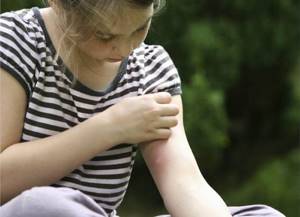
If you don’t help your child at this stage by rewriting usual meals, you can reach:
- severe itching;
- weeping, dry eczema;
- neurodermatitis.
In addition to problems with appearance, the child will have problems sleeping. The patient will be irritable all the time. And rapid weight loss will be explained by metabolic disorders.
Another “helper” of a prolonged allergic reaction is usually called any gastrointestinal disorder. Against the background of a weakened immune system, the child will constantly suffer from colds and other diseases closely related to the respiratory tract.
Menu for 7 days
It can be difficult to choose dishes for a hypoallergenic diet on your own, so below is a list approved by nutritionists. But it is best to plan a diet for a week under the guidance of a doctor.
Optimal diet for the week:
| Day of the week | Sample menu for the day |
| Monday |
|
| Tuesday |
|
| Wednesday |
|
| Thursday |
|
| Friday |
|
| Saturday |
|
| Sunday |
|
Article on the topic: What prohibited foods should you not eat if you have allergies?
"Black box"
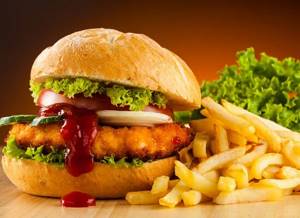
When planning your weekly schedule, be sure to keep in mind the entire long list of prohibited ingredients. The situation is easiest with representatives of fast food and sweets.
No chewing gum, confectionery, harmful yoghurts with an almost endless shelf life. It’s better to buy a used yogurt maker and create fermented milk masterpieces for the whole family at once. The ban includes sausages and frankfurters that are “stuffed to the brim” with sodium nitrite, which is responsible for their attractive appearance.
It is also prohibited to experiment with overseas novelties. Exotic fruits, which due to hereditary predisposition are not characteristic of an allergy sufferer, will worsen the situation. You also need to be extremely careful with:
- any seafood;
- fish, caviar;
- smoked meats.
Before giving a child a store-bought treat, parents are required to familiarize themselves with its composition. Unclear emulsifiers and other representatives of chemical terminology are a red light for sending your purchase to the trash bin without a chance of correction.
Recipes for diet meals
Hypoallergenic food recipes can be used in a wide variety of ways, the key condition is proper preparation and high-quality ingredients. Cooking most dishes does not require special skills.
Important! If you are allergic to seafood, you should replace it with meat, preferably poultry.
Chicken and spinach soup
You will need to prepare:
- chicken broth (drain water after boiling 2-3 times);
- spinach – 100-150 g;
- onion – 1 medium onion;
- sour cream – 50 g;
- butter – 20 g;
- dill is added according to taste.
The procedure for preparing hypoallergenic soup is very simple. The broth is simmered over low heat, spinach, onion and sour cream are added alternately. Cook the soup for 30 minutes, checking for readiness. Add dill dressing.
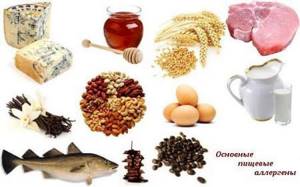
Steamed meat cutlets
Chicken is mainly used to prepare hypoallergenic cutlets, but it can be replaced with minced pork and beef.
To prepare them you will need to prepare:
- minced meat – 0.5 kg;
- bread – 2 pieces;
- milk – 100 ml;
- onion – 1 piece;
- egg – 1 pc.
Cooking consists of a series of simple steps. Place bread (preferably a loaf) in milk to soak. Chop the onion finer and add it to the minced meat along with the bread. Next you need to add the egg and mix everything. Form cutlets and cook in a steam bath until done.
Cottage cheese casserole
Standard cottage cheese casserole is an incredibly tasty and healthy hypoallergenic dish. Its use allows you to cover the daily need for protein in 1 dose.
To prepare a hypoallergenic casserole you will need the following products:
- cottage cheese – 300-400 g;
- egg white – 2 pcs;
- raisins – 50 g;
- sugar is added to taste;
- semolina - half a tsp;
- baking soda – 10-15 g;
- vinegar – 1 tsp.
The curd is pressed through a sieve to remove stuck together lumps. Add 2 egg whites, sugar, semolina and raisins to a homogeneous consistency. After thorough mixing, soda is added (it is quenched with vinegar). The mixture is placed in any convenient form and placed in the oven. It is necessary to bake the diet casserole until it is ready, as evidenced by the blush on the crust.

